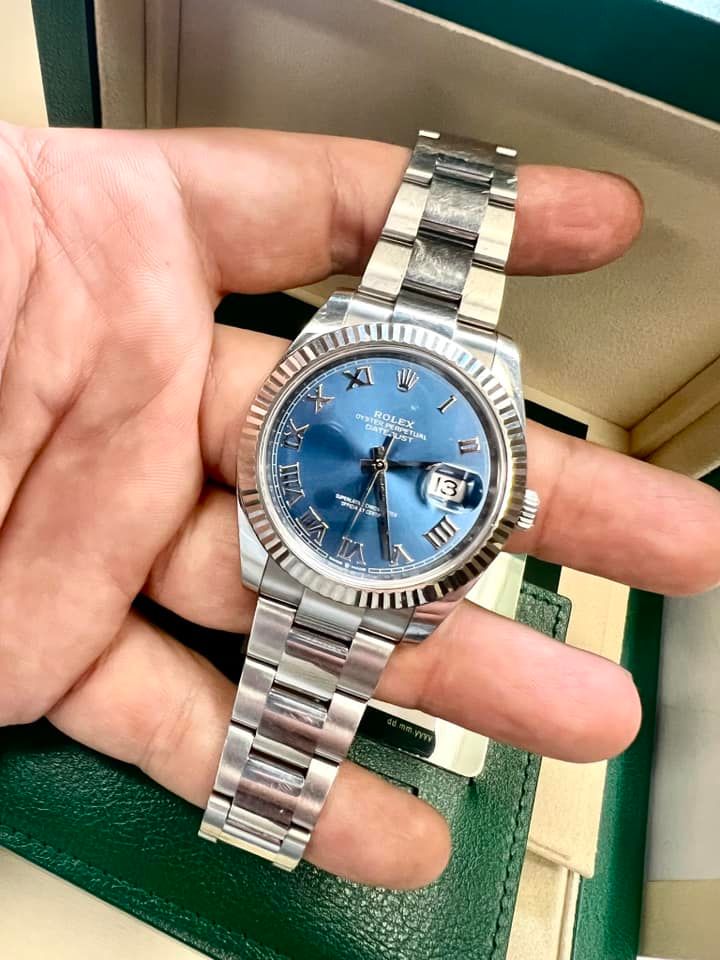The Best Time to Sell Silver: Maximizing Your Return in a Changing Market

Table of Contents
- Why Timing Matters When Selling Silver
- What Really Drives Silver Prices Up and Down
- Economic Clues That Signal Higher Silver Value
- Seasonal Patterns Worth Paying Attention To
- How Personal Goals Influence When to Sell Silver
- Common Mistakes We’ve Seen People Make
- Practical Tips We Share With Clients Every Day
- Wrapping It Up: Making the Right Move With Confidence
Deciding when to sell silver isn’t about luck; it’s about reading the signs in the market and aligning them with your personal goals.
Fluctuating silver prices are influenced by supply, demand, and global events, and paying attention to these helps you sell smart.
Maximizing silver value requires preparation, patience, and choosing a reliable buyer who treats your investment with respect. If you’re unsure where to start, you can review what we buy and sell at Acadiana Gold Exchange to better understand your options.
Why Timing Matters When Selling Silver
One of the most common questions people ask us is simple: “When should I sell my silver?” It’s a fair question—and an important one. Selling too early might mean leaving money on the table, while waiting too long can cause you to miss the peak.
We’ve worked with countless people in Acadiana who’ve held onto silver coins, jewelry, or even inherited silverware sets for years. Some were waiting for the “perfect moment,” while others sold as soon as bills piled up. The truth is, there isn’t one magic answer. The right time to sell is about recognizing opportunities in the market while also considering your personal situation. That balance is what helps you make the most out of your silver value.
If you’re not sure what type of silver you own, it’s smart to learn how to tell if silver is real before selling—purity plays a big role in determining your return.
What Really Drives Silver Prices Up and Down
If you’ve watched silver prices before, you know they can swing sharply—sometimes within weeks. So, what’s behind those shifts?
First, silver is unusual because it’s both a precious metal and an industrial one. That means it’s influenced by investors looking for a safe haven and by factories that need silver for production.
We’ve seen demand spike when solar panel production rises or when new tech requires more silver in electronics. On the flip side, if industrial demand slows, prices can ease up. Add in mining supply disruptions or global events, and you start to see why timing your sale is more of an art than a science.
Our advice? Don’t just glance at the spot price once and make a decision. Instead, watch the bigger picture and pay attention to the headlines. That’s how you’ll get a clearer idea of when to sell silver at the right moment.
Economic Clues That Signal Higher Silver Value
One of the strongest signals for silver is how the economy is behaving. If inflation is climbing, history shows us that people flock to precious metals. That extra demand naturally boosts silver prices.
Another factor is interest rates. When rates are low, investors often buy more silver because other investments aren’t as appealing. But when rates rise, some money shifts out of metals and into safer fixed-income options.
We’ve also noticed that uncertainty—whether political, financial, or global—usually pushes silver upward. For example, during recent market instability, many of our clients decided it was the right time to sell, and they walked away with far more than they would have a year earlier.
If you’re wondering how to catch those signals, here’s our tip: follow both local and international news. You don’t need to become a financial analyst, but keeping an eye on trends can help you decide when to sell silver before prices dip again.
Seasonal Patterns Worth Paying Attention To
Silver doesn’t always follow the same seasonal rhythms as gold, but there are patterns worth knowing.
At the start of the year, investors often rebalance portfolios, and we usually see a bump in silver prices. In other regions of the world, wedding and holiday seasons boost jewelry demand, which can create short-term spikes.
We’ve even noticed that tax season sometimes plays a role. People cashing in silver to cover expenses can increase supply in the market, which may slightly soften prices.
These cycles aren’t guarantees, but being aware of them helps. If you’re planning ahead, it’s another factor that tells you whether now is the right moment or whether you might wait a little longer to get more silver value.
How Personal Goals Influence When to Sell Silver
Sometimes, the right answer isn’t about the market at all—it’s about your needs.
We’ve had clients walk in who were holding onto a silver collection from their grandparents. They weren’t sure if it was the “perfect” time to sell, but they needed funds to cover medical bills. In that case, waiting for another 50 cents on the ounce wouldn’t have made sense.
On the other hand, we’ve met investors who simply wanted to diversify. Silver was making up too much of their portfolio, and selling part of it helped them balance their risk.
Your goals matter just as much as silver prices. Ask yourself: are you looking for quick cash, portfolio balance, or maximum profit? The answer will guide when to sell silver better than chasing every market swing.
Common Mistakes We’ve Seen People Make
We’ve been in this business long enough to notice a few patterns—and unfortunately, some folks make the same mistakes over and over again.
One big one? Waiting forever for the “absolute peak.” We’ve seen silver climb, stall, and dip while someone hesitated, hoping for just a little more. By the time they sold, the market had already cooled.
Another mistake is the opposite: selling in a panic when prices dip slightly. The market always has small fluctuations, but reacting too fast can cost you.
We’ve also met people who sold to the first buyer they found without checking rates elsewhere. That one hurts because a lack of research can shave a big chunk off your final silver value.
The lesson here is simple: be patient, but don’t get stuck in indecision. And always, always compare offers.
Practical Tips We Share With Clients Every Day
Here’s what we tell people when they come in asking about the best time to sell:
- Stay updated on spot prices. A quick check every week helps you stay informed without obsessing.
- Know what you have. Is your silver sterling, fine, or coin silver? Purity and weight matter when calculating silver value.
- Shop around. We encourage our clients to get multiple quotes. If a buyer pressures you into selling immediately, that’s a red flag.
- Watch demand cycles. Times of high industrial need or global instability are usually when silver prices rise.
- Set your own goal. Decide the minimum you’re willing to accept. If the market hits it, sell confidently.
These steps may sound simple, but combined, they make a huge difference in helping you walk away with the return you deserve.
Wrapping It Up: Making the Right Move With Confidence
At the end of the day, figuring out when to sell silver isn’t just about watching the markets—it’s about making a smart, informed choice that works for your situation. Yes, economic trends and silver prices play a huge role, but your personal goals matter just as much.
If you’re holding onto silver and wondering whether now is the right time, don’t go it alone. We’ve guided people across Acadiana through the process, and we know how to spot opportunities that make a real difference.
When you’re ready, contact us at Acadiana Gold Exchange. We’ll evaluate your silver, give you a clear understanding of its silver value, and help you decide whether now is the time to sell.
Visit our homepage to explore more resources, call us at 337-534-0039, or send us a note at naaserus@yahoo.com. Let’s make sure your silver works for you, not the other way around.
Frequently Asked Questions
How do we know when to sell silver?
We look at market trends, economic signals, and our personal goals. Timing matters because silver prices shift quickly, and selling at the right moment helps us maximize silver value without missing opportunities.
What affects silver prices the most?
We’ve seen silver prices influenced by supply, demand, inflation, and even global events. Since silver is both an investment and an industrial metal, its value can change fast. Watching these patterns helps us decide when to sell silver for the best return.
How do we calculate silver value before selling?
We consider purity, weight, and current silver prices. Sterling, fine, and coin silver all carry different values. By knowing what we own, we can confidently determine our silver value and avoid underselling.
Should we sell silver during market dips?
We avoid selling in a panic. Short-term dips don’t always reflect true silver value. Instead, we track longer trends in silver prices and sell when conditions align with our financial goals.
Can personal goals impact when to sell silver?
Absolutely. Our decision isn’t only about silver prices—it’s also about what we need. Whether we want quick cash, portfolio balance, or maximum profit, our goals help determine the right time for us to sell.



